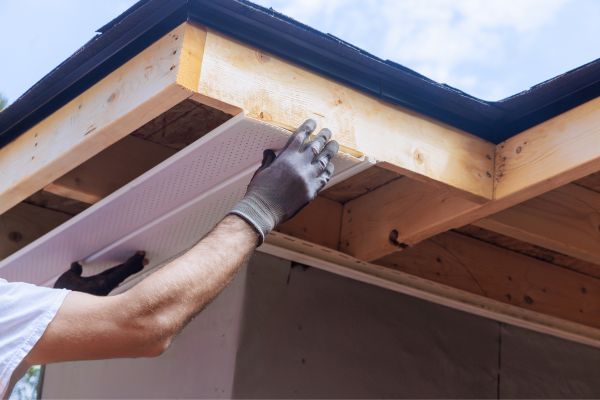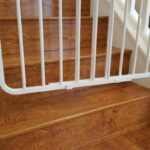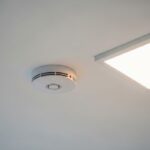As the seasons shift, your home becomes your frontline defense against the elements. Whether it’s a scorching summer, a bitter winter, or a rainy spring, the importance of weatherproofing cannot be overstated. This home weatherproofing guide is your comprehensive resource to safeguard your living space, enhance energy efficiency, and preserve the comfort of your home throughout the year.
Understanding the Need for Home Weatherproofing
Many homeowners underestimate the value of proper weatherproofing until the effects of extreme weather take their toll. From rising energy bills to water damage, the lack of adequate protection can lead to significant expenses and inconveniences. A well-weatherproofed home not only minimizes energy consumption but also creates a more stable indoor environment. Drafts, leaks, and poor insulation can make your heating and cooling systems work overtime. This guide will show you how to identify problem areas and implement long-lasting solutions.
Preparing for Winter: Insulation and Draft Prevention
Winter brings a unique set of challenges that demand a proactive approach. Cold air infiltrates through the smallest cracks and crevices, leading to discomfort and wasted energy. One of the first steps in this home weatherproofing guide is to inspect the insulation in your attic and walls. Insufficient insulation can cause heat loss, especially through the roof.
Windows and doors are other vulnerable points. Check for drafts by holding a lit candle near the edges and observing any flickering. If you notice air movement, consider sealing gaps with weather stripping or caulking. Even small leaks can add up to major energy losses over time. Additionally, thermal curtains can add a layer of defense against the cold while enhancing your home’s aesthetic.
Don’t forget your pipes. Frozen pipes are a nightmare for homeowners, often resulting in bursts and water damage. Wrapping exposed pipes with insulating foam can protect them during the coldest months, saving you from costly repairs and water loss.
Battling the Summer Heat: Keeping Cool Air In
When the summer heat rolls in, your goal shifts to keeping cool air inside while keeping the heat out. The principles remain the same—focus on insulation, sealing, and ventilation. In this home weatherproofing guide, one of the most effective tips is to evaluate your attic ventilation. Poor ventilation traps heat, making it harder for your air conditioning to maintain a comfortable temperature.
Roofing also plays a crucial role. Consider using reflective roofing materials or coatings that repel sunlight rather than absorb it. Inside your home, insulated curtains and blinds can shield your rooms from direct sunlight, reducing indoor temperatures without relying solely on air conditioning.
Inspect your doors and windows again, as the seals may have deteriorated since winter. Summer is also an excellent time to repair or replace weather stripping that has become brittle or loose. Sealing these entry points ensures your efforts in cooling the home aren’t lost to outside heat seeping in.
Managing Moisture During Rainy Seasons
Rainy seasons introduce moisture as the primary concern. Without adequate protection, your home is susceptible to mold growth, structural weakening, and unpleasant odors. This section of the home weatherproofing guide emphasizes the importance of water diversion and sealing.
Start by checking your roof for damaged shingles or areas where water might pool. A well-maintained roof is essential to keeping rain out. Next, clear your gutters and downspouts to ensure water flows away from your foundation. Clogged gutters can cause water to overflow and collect around your home’s base, leading to cracks and leaks in the foundation.
Basements are often the first places to experience water intrusion. Inspect your basement walls for signs of dampness or mildew. If necessary, apply waterproof sealant to problem areas. Outside, ensure the ground slopes away from your home to prevent water from settling near the foundation.
Windows wells are another vulnerable area. Install covers to prevent water from collecting and seeping through basement windows. If your region experiences particularly heavy rainfall, installing a sump pump may offer peace of mind by automatically removing excess water.
Year-Round Strategies for Lasting Protection
While seasonal adjustments are vital, some weatherproofing efforts offer year-round benefits. This home weatherproofing guide advocates for regular inspections of your home’s exterior. Look for cracks in the siding, foundation, or around vents and fixtures. Repairing these as soon as they are noticed prevents more significant issues down the line.
Ventilation is another year-round concern. A home that can “breathe” properly is less likely to suffer from condensation buildup and mold growth. Make sure your attic, crawl spaces, and bathrooms are properly ventilated to maintain a healthy airflow.
Energy-efficient upgrades also pay off in the long run. Double- or triple-pane windows, smart thermostats, and energy-rated doors not only improve your home’s resistance to weather but also contribute to long-term savings on utility bills. These investments might come with upfront costs, but the return in comfort, efficiency, and reduced maintenance is substantial.
The Importance of Professional Assessment
Sometimes, a DIY approach isn’t enough. If you’re unsure about the condition of your insulation, roofing, or foundation, consulting a professional can provide clarity. A certified home energy auditor can perform a thorough inspection and recommend targeted improvements. In this home weatherproofing guide, we stress that professional input can be a game-changer, especially for older homes or properties in extreme climates.
A professional assessment also ensures that all safety standards are met, especially when dealing with electrical systems, gas lines, or extensive structural repairs. Their expertise can reveal hidden vulnerabilities that might go unnoticed in a typical inspection.
Bringing It All Together: Why Weatherproofing Matters
In every season, your home faces a new set of challenges. From heatwaves to snowstorms, the elements test the limits of your structure and your energy efficiency. This home weatherproofing guide is not just about patching up leaks or installing insulation—it’s about creating a resilient, efficient, and comfortable environment for you and your family.
By taking the time to weatherproof your home, you’re investing in its longevity, safety, and value. The benefits go beyond the tangible; there’s peace of mind in knowing your home is protected from the unpredictable forces of nature. With each improvement, you move closer to a living space that is truly prepared for anything the weather may bring.
Whether you’re a seasoned homeowner or just settling into your first property, this guide empowers you to take control. Let each season find your home ready, resilient, and remarkably comfortable.







